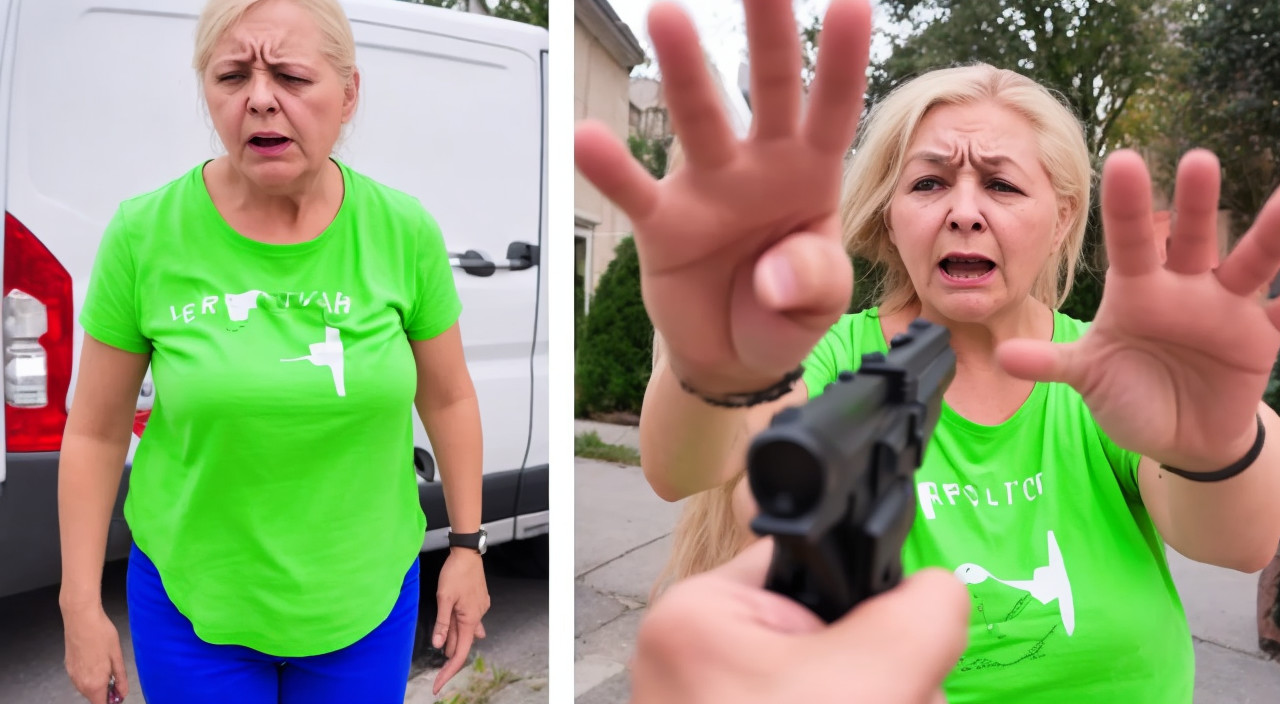The internet is awash with memes that poke fun at stereotypes. But there is one viral moniker that stands out: Karen.
Like “Kyle” or “Becky,” Karen is shorthand for a specific behavior class: rude entitlement. Its ubiquity is a source of criticism, with a recent tweet from the Philadelphia community organizer Gwen Snyder describing it as misogynistic.
What is a Karen?
The term “Karen” originated on Reddit in 2017 and quickly became a popular meme used to make fun of women who get angry quickly or act entitled. It can be applied to anyone but is most often used to describe white, middle-aged, or affluent women who are self-absorbed and tend to demand things from people.
Karens are also associated with racist, petty behavior and can be dangerous when irrational. They will call the police on innocent people of color, lash out at their pets, or call for protests, then turn around and blame the authorities for not doing what they want.
In the United States, a Karen is typically a middle-aged white woman who wears a bob haircut and is always demanding and entitled to special treatment and privileges from others. She usually tries to control everyone around her, especially children.
Another characteristic of Karen is that she demands unreasonable things from minimum wage employees, specifically retail or food service workers. This can include requiring that someone wear a protective mask when entering the store or refusing to honor an expired coupon.
When these demands aren’t met, a Karen will try to get the employee in trouble and threaten to sue. This is a form of harassment and a sign of a lack of empathy, compassion, and thought for other people.
This type of behavior can cause problems for many people, especially those who are less privileged than they are. For example, if Karen is at a supermarket and wants to buy something with their debit card that isn’t available, they can threaten the store manager and ask to speak to a lawyer.
A Karen can also be seen in videos that go viral online, like this video of a woman who refused to put her dog on a leash when she saw a blackbird in the park. This video is a classic example of Karen’s overreaction, racism, and animal cruelty.
The term is also often associated with wealthy people who point guns at people, claiming to protect the public. In 2020, Mark McCloskey and Patricia McCloskey were dubbed “Karen and Ken” after they were spotted pointing guns at protesters in St Louis.
What is the Karen Meme?
The Karen meme, like the “Chad” or “Gammon” catchalls that have become popular on social media, has its roots in America and refers to middle-aged white women who talk and behave in specific ways. But whereas ‘Chads’ and ‘Gammons’ can be sexist, ‘Karens’ has been embraced by feminists to highlight how power imbalances can be exploited.
The term has been used to demonize people, from privileged assholes to those who refuse to wear face masks or get vaccinated against COVID. But while it’s an easy term to apply, how Karens are portrayed online can be sexist and potentially retaliatory.
As a pejorative, the term is rooted in a long tradition of using proper names to make negative stereotypes. This practice dates back to the days when characters were based on archetypes rather than individuals, and a name was often used to stand in for the whole character’s personality.
While the Karen Meme has been around for a while, the most recent iteration of it hit the internet in December 2017. The subreddit r/F*ckYouKaren became famous after an aggrieved Redditor called out his ex-wife in a series of rants that eventually led to the forum’s creation.
One woman who calls herself a Karen says she was initially upset to have her name used so negatively but believes it’s also a good learning opportunity for her. She hopes it will help her be more mindful of how she interacts with other people, and says she’s using her ‘Karen powers’ for good now.
A 17-year-old student from Irvine, California, who goes by karmacop97, created the subreddit two years ago, and soon it had a large following. He says the term’s popularity stems from an underlying belief that it’s a catch-all for all middle-aged white women – but that’s not necessarily true.
In addition to being a sexist and potentially retaliatory term, the Karen Meme can also be used negatively in the workplace. In particular, if an employee voices her concerns to the manager, she could perceive using the term as discrediting her claims and, in turn, dismissing them.
What is the Karen Crusade?
The Crusades have been one of history’s most fascinating events for over five hundred years. They were a series of rabidly savage conflicts that focused the power of Europe against a common enemy. In 1095 Pope Urban II summoned a band of Christian warriors to take up the cross and reconquer the Holy Land. The result was the most important battle in Christianity’s history, which would have a lasting impact on the world and its religions.
Even though historians have been interested in the Crusades since the first one a century ago, very little has reached a general audience. The result is that only novelists, historians, and journalists have had the chance to explore this amazing story of human sacrifice and selflessness.
The most successful entrant in this field is Karen Armstrong, a British author. She is a well-known and respected writer on comparative religion. She has also authored two memoirs and several other books on religion, many of which are aimed at the layperson.
As a former nun, Armstrong has always been fascinated by theology, especially the role of women in the church. Her fascination with women’s history led her to found the National Women’s History Museum. She garnered Congressional support, recruited the first Board, and spearheaded the nonprofit incorporation process. She was also the first Chair and President of the museum, a job she carried out without any remuneration.
The book above has countless other fabled feats to its credit, but the most impressive is the fact that it managed to stand out in a crowd of well-written and highly technical works. The book is the brainchild of a woman with an uncanny ability to distill complex information into simple and engaging stories.
What is the Karen Group?
The Karen group, which is pronounced “Kah-ren,” is primarily indigenous to the hilly eastern border region of Burma (Myanmar). It is the second largest ethnic minority in Myanmar, comprising 6% of its population.
Most Karens live in rural villages, often small clearings in forests. They grow rice, vegetables, and corn and raise livestock such as chickens and pigs.
Villages are usually made of bamboo and thatch, with a nearby river for water collection. Houses are built on stilts, and villagers sleep on woven mats on the floor or in thatched tents. They use ox-carts, elephants, and motorized river long-boats for transportation.
Most Karen people are Buddhists, but some also practice animism. This means that they believe in spirits, or “K’la,” that have human attributes and are a part of nature. They are responsible for crops and are sometimes thought to rule the afterlife.
They are highly skilled farmers and cultivate a variety of crops, including rice. They can grow vegetables, mushrooms, and edible wild plants as well.
Their diet is very low in calories, but rich in protein and calcium. They eat a lot of rice, fish sauce and greens that they gather from the forests.
Some Karens also eat fermented fish, which is often mixed with their rice dishes to add flavor and vitamins. They also eat chili peppers and spices like turmeric, ginger, cardamom and garlic.
The Karens have a strong cultural heritage, especially in their folktales and mythology. Early missionaries were impressed by their stories, which are similar to the book of Genesis in the Bible.
They have a wide range of religions, with Buddhists, Christians and animists all having their own beliefs. Animists believe that there are spirits or “K’la” all around the world. They believe in a world where there are lords and that each one has a number of servants or “ghosts” who roam the earth.
In some animist belief systems, the spirit of the dead is buried with their remains. This is done to ensure that the souls will be safe and accepted in the next life.






